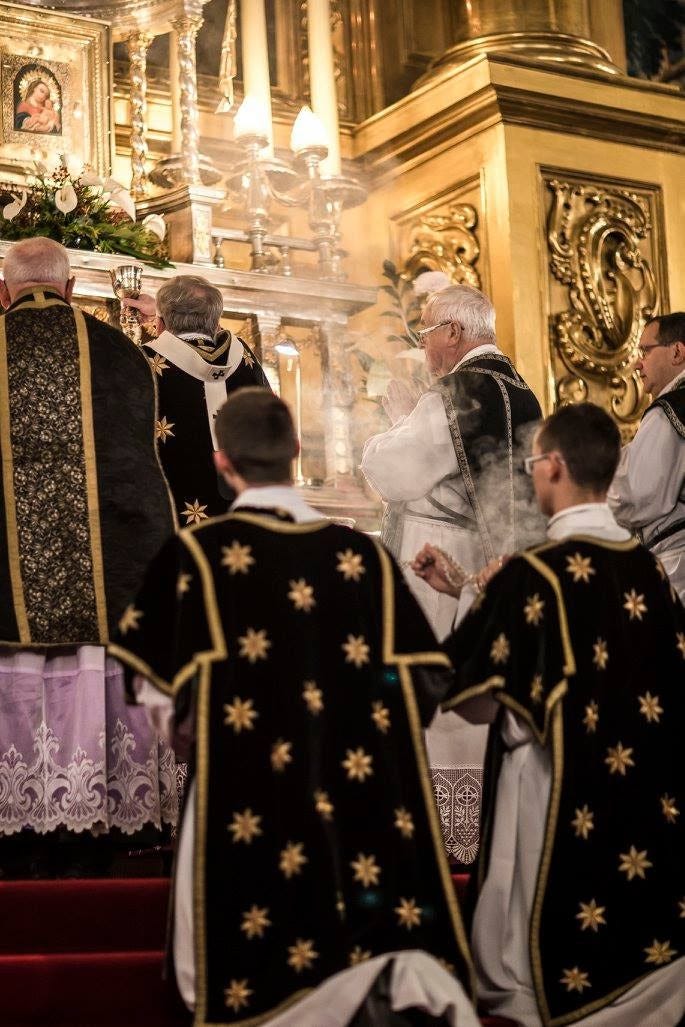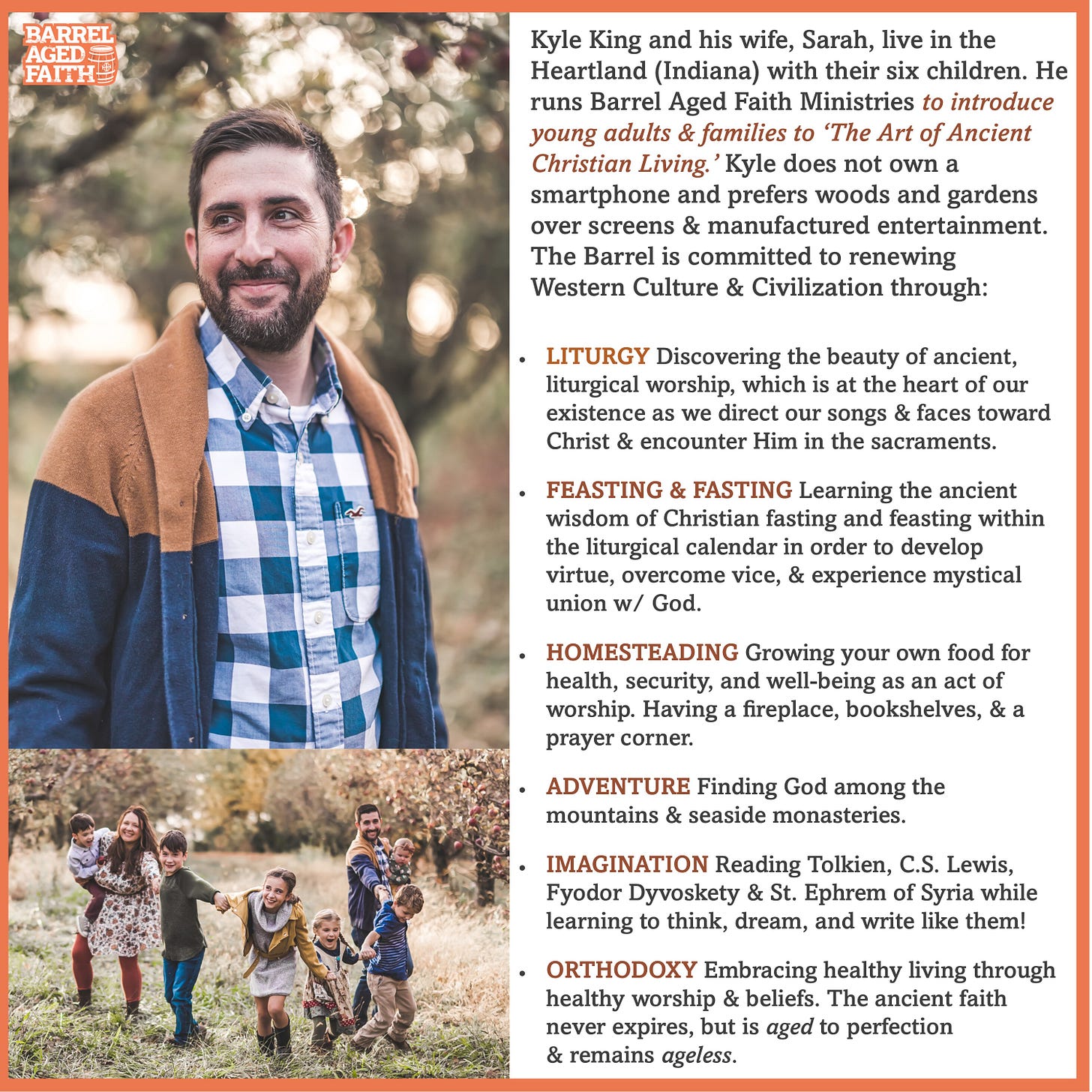How to Make Halloween Holy Again
Reclaiming the Holiness of All Hallow's Eve while Rejecting the Pagan & Secular


For most Americans, Halloween is simply a fun, secular holiday on the calendar much like the Fourth of July or Thanksgiving. What most Americans do not realize is that Halloween is the vigil or kick off a holy triduum (3 holy days) during the fall for liturgical Christians in the West (Catholics, Anglicans, & Western-rite Orthodox). The holy triduum during the spring in Holy Week is Holy Thursday, Good Friday, and Easter Sunday, while the holy triduum of the fall is All Hallow’s Eve, All Saints Day, and All Souls Day.
The dominant theme of these three days is that Christ has vanquished death with his own death, and that it is now possible for people to overcome death through the power of His resurrection. On All Hallow’s Eve (October 31st), we focus on Christ defeating the demonic realm. On All Saints’ Day (November 1st), we focus on all those who are victorious in heaven and who have conquered the evil one. Everyone in heaven is a saint and are praying for us! On All Souls’ Day, we remember all those who have died and pray for their final journey Home. (If you would like to know more about this topic of ‘praying for the faithfully departed,’ please click below on a short video I made about it).
Why do these days ‘fall’ during the Fall?
In the northern hemisphere, it is ‘harvest season’ before the winter, and so many of the scriptural readings in the liturgy are connected with the Biblical theme of the ‘final harvest’—the time in history when Christ will return with angels in order to harvest ‘souls’ for His Kingdom and judge the living and the dead. Harvest time will either arrive at our own departure from this world or when the Lord returns with His Second Coming (Perhaps right around the corner with how things are going in the world?) So these three days along with the month of November really revolve around this theme of death, judgment, and salvation in Christ.
Why ‘Holy Days’ when Everyday is Holy?
Some people take issue with holy days in general, because they have several misunderstandings. Let’s deal with three of them here:
The first objection is: ‘Everyday is holy’ and not just some. Therefore, having ‘holy days’ is a bit misleading and should be avoided.
The reply is: ‘Yes, all days are holy, but some are set aside for greater solemnity, remembrance, and celebration since we are limited creatures. In heaven, this will not be an issue, but in these fallen bodies in a fallen world, we cannot treat everyday like its Christmas and Easter. We have to work. We have to repent and fast. And so we set aside certain days for attending worship together and feasting together in light of certain events in salvation history. Keep in mind that the word ‘holy’ also means ‘set apart for a special purpose.’ It is also where we get the word ‘holiday!’
The second objection is: Jesus and the early church eliminated the Jewish calendar of special days, feasts, and gatherings and rejected any form of a liturgical calendar or ritual in worship.
The reply is: In reality, this is simply not true. The early Christians viewed Sundays as the day to liturgically commemorate the Resurrection of Christ. They referred to it as the 8th day of the week that transcended time and brought about a New Creation. They also began celebrating Easter Sunday very early on. We know that in the early 2nd century that there was even a hot debate about this, because certain Christians were celebrating Easter on different days, and they sought to resolve this. We also know that they were commemorating the anniversaries of a martyrs’ death very early on and made pilgrimages to their shrines where they were buried. The early church’s worship also involved ritual which is why they practiced the rituals of holy communion and baptism along with the anointing of the sick (see James 5). These rituals were not mere reminders or symbols, but sacraments that brought heaven to earth. St. Paul explicitly states that communion is a real, mystical participation in the Body and Blood of Christ (1 Corinthians 10 & 11).
The 3rd objection is: These holy days were originally pagan and the Catholic/Orthodox churches retained some of these evil, pagan elements in their newly established ‘Christian’ holy days. Halloween is the most obvious example of this ‘syncretism.’
The reply is: The cross was also pagan and was a torture device that was used to execute people, yet the early Christians took this symbol and placed it in their churches and homes because Christ had transformed its meaning. This can also occur with holidays as long as they are thoroughly purged of idolatry and reoriented toward the worship of Christ.
Also, there is no doubt that this time of the year was connected with various pagan holidays that remembered the dead and tried to commune with them. However, Judaism and Christianity strictly forbid this (see the Witch of Endor story in 1 Samuel 28). Instead, Christians are asking for the saints in heaven to pray for us in the same way that we ask a friend to pray for us. We DO NOT set out an empty chair at the dining room table and attempt to get that saint to show up to our home so we can speak with them. That would be very wrong and sinful. (This is very different than God sending an angel or saint to us unexpectedly to give us a message as has happened at times throughout church history and even in Scripture… see Elijah and Moses talking with Jesus in the Transfiguration).
Is Halloween a High Holy Day for Wiccans?
We should keep in mind, however, that for neopagans and witches, halloween is a ‘high holy day,’ and they are heavily recruiting young people (particularly women) to their craft through social media trends, crystals and spell-books, and ordinary friendships. Although it is difficult for many to attend a one hour church service, these witches are more than willing to fast all day and stay up all night communing and performing rituals together in the light of the moon (see my video clip below).
This should remind us that young people are not looking for quick and flashy worship services (mega-church concerts) or banal liturgies with 1970’s music (sadly, many modern Catholic masses). They are willing to participate in 3 hour liturgies with candlelight, incense, and chant if they believe they are being immersed into a deeper and higher reality. This is why ancient liturgical worship we find in the Christian East (Eastern Catholic/Orthodox) and the Christian West (Traditional Latin Masses, Anglican Ordinariate, Western Rite Orthodox) are on the rise among the young. It is also why Paul Kingsnorth, a popular U.K. writer and thinker, converted from Wicca to Orthodoxy. He discovered the supernatural in Wicca but found Christ to be the deeper, supernatural reality Who holds all things together.
So let us reclaim this holiday for Christ with prayer, repentance, worship, and holy festivity with family and friends! (and some trick or treating is fine too. Maybe dress up as a saint?)
If you liked this article and video clips, you may want to check out my full video on this topic below.
Also, if you want to support Barrel Aged Faith and equip young people and young families to embrace Apostolic Christianity and Ancient Christian Living, please consider becoming a paid subscriber here on Substack. It supports my family of six children and more importantly, spreading the Kingdom of God.



